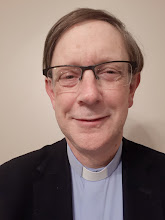This morning we set off for Bethlehem, which is only 15 minutes drive from Jerusalem, but in the Palestinian territories. That meant that we needed to go through a checkpoint to get there, and to get back. On the way to Bethlehem, we visited Herodion, one of Herod the Great's favourite palaces/forts.
Herod was a great builder. In building his public works, such as the Temple in Jerusalem and the tomb of the patriarchs in Hebron, it is possible that he was wanting to gain popularity with the Jewish people (he was only half-Jewish himself, and seems to have been more Roman than Jewish in his way of life). He was hated by many Jews, but his public works were certainly impressive and religiously significant - likely to gain him favour with the people. With his palaces and forts he appears to have been focusing on his own status and security - about which he took great care. He put to death even members of his own household and family in order to maintain his position, and obviously had a paranoid streak. I do think it is ironic, though, that the hated and hardly-Jewish King Herod was the builder of what are now the Jews' two most sacred sites.
This view of Herod's Palace at Herodion was taken from a little way up the Herodion hill, on the top of which was Herod's fort. The large square area was a pool in his palace, with a little round island - perhaps originally topped by a statue - in the middle. The buildings close to the hill may have been staff quarters.
At the top of the hill was the fort.
The fort was built and used in the time of Herod the Great, but it was also used by partisans at the time of the first Jewish Revolt against the Romans in 66-70AD, and the second Jewish Revolt (also known as the Bar Kochva revolt) in 132-135AD. As with other sites we visited, there were huge cisterns in this fort, to preserve copious supplies of water for use in times of drought or siege.
From the top of the fort, you could see for miles in all directions. (We were able to see some of the illegal Jewish settlements in the West Bank from here. Jewish settlements typically have red tile roofs.)
A recent find at Herodion was Herod the Great's tomb. It was built into the side of the hill and is still being excavated.
Our next stop was Bethlehem, where we went first to an area called The Shepherd's Fields. This is traditionally identified as the place where the shepherds received a visitation from angels at the time of Jesus' birth. Churches have been built on this site, incorporating the caves where shepherds may have taken shelter.
We had a short reflection and sang a hymn in the cave. Then we went out into the garden are for a time of quiet meditation. There was a special, peaceful atmosphere here, and it was good to take some time to be quiet.
After some time souvenir shopping at a local store that sold local handicrafts, we went to lunch at a very nice local restaurant.
After lunch, we went to the Church of the Nativity - which is supposed to be situated on the site where Jesus was born. As a consequence, it is thought of as one of the two holiest Christian sites. The church was built by the Emperor Justinian in the 6th century, after the destruction of an earlier, Constantinian church. It is the oldest church still in use in the Holy Land, as it was exceptional in not having been destroyed by the Persians in 614, when they invaded. The church is understood to have been spared because the magi were depicted on the outside of the church, and one of them was in Persian dress.
The front door is very low - apparently made that way in the 16th century to stop people riding into the church! It is often called the door of humility, because any adult will have to bend down in order to enter it.
The church was very busy when we arrived, and the Dean found that there was a service taking place in the grotto where Jesus was born, with a long line of people waiting to enter the grotto when the service ended.
So he decided to take us next door to the Roman Catholic (Franciscan) St Catherine's Church, and the caves underneath, which adjoin the sacred grotto, and where St Jerome lived and worked on his translation of the Bible. We did not go back into the church and I realised then that we were not going to get into the grotto, which was a disappointment. But the Dean said that if we wanted to go into the grotto, we could do that on one of our days off. I thought that that would be a good idea, and I later had the opportunity to do that.
On the way back to Jerusalem we passed close to the 24 foot high separation wall between Israel and the Palestinian territories. While ordinary tourists don't have much trouble getting through the check points, Palestinians can have significant problems.
After dinner, I went with two others from the course to visit the Church of the Holy Sepulchre. It was great to be there when there were fewer people and I managed to get into the two holiest places there - the place where Jesus' resurrection is thought to have happened, and the place where he was crucified. I left my camera at the College! So I don't at this stage have any photos to post.












No comments:
Post a Comment